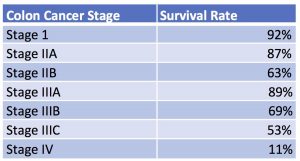According to the latest statistics, one in eight women will develop breast cancer in her lifetime. Luckily with new advancements in treatment, the mortality associated with breast cancer has decreased. Still the disease claims over 40,000 lives a year in the US alone, so knowing how to reduce your risk of breast cancer is an important asset.
What Causes Breast Cancer?
Breast cancer is the result of DNA mutations, which is characterized by a solid tumor that originates in the tissue of the breast. There are a few different factors that can cause this DNA mutation. The majority of them are acquired later in life. The most common age of diagnosis is 65. Age is the main risk factor for breast cancer simply because the longer you live, the more opportunity there is for the DNA in your breast to develop a mutation.
Sometimes these DNA mutations are inherited at birth, like the BRCA1 or BCRA2 gene. If your family has a history of breast cancer, it is important to go through screening and genetic treatment early, as sometimes preventative treatment is recommended. (NY Daily News)
Your breast cancer risk is also tied to certain other health issues, which is where our 9 ways to reduce your risk come in. Some recent studies have found that there are in fact some changes you can make and habits you can work on to reduce your odds of getting breast cancer:
- Be mindful of your weight. Becoming overweight or obese (especially after menopause or later in life) increases breast cancer risk. This is because after menopause, most of your estrogen comes from fat tissue. Having more fat tissue increases your chance of getting breast cancer by raising estrogen levels. Women who are overweight also tend to have higher levels of insulin, which is another hormone. Higher insulin levels have also been linked to other cancers.
- Exercise regularly. A few different studies have found that exercising regularly can improve your chances of avoiding breast cancer. One particular study from the Women’s Health Initiative found that as little as 1.25 to 2.5 hours of brisk walking per week reduced a woman’s risk by 18%. The American Cancer Society recommends that you don’t try to cram this into one long workout, but instead spread it out over the course of the week.
- Limit time spent sitting. A study from the American Cancer Society showed that women who spent more than 6 hours a day sitting when not working had a 10% greater risk for invasive breast cancer compared with women who sat less than 3 hours a day.
- Limit your drinking. Research has shown that women who have 2 to 3 alcoholic drinks a day have about a 20% higher risk compared to women who don’t drink at all. Women who have one drink a day have a very small increase in risk as well. Excessive drinking has been found to increase your risk of other cancer types as well. (American Cancer Society)
- Don’t smoke. It’s no surprise that smoking is bad for your health. However, accumulating evidence suggests that there’s actually a link between smoking and breast cancer risk, particularly in premenopausal women.
- Breastfeed. According to the Mayo Clinic, breast-feeding may play a role in breast cancer prevention. They suggest that the longer you breastfeed, the greater the protective effect. (Mayo Clinic)
- Avoid or limit hormone replacement therapy. Hormone replacement therapy (or HRT) was used in the past to help control some symptoms of menopause like night sweats and hot flashes. Researchers now know that postmenopausal women who take the combination of estrogen and progestin may be more likely to develop breast cancer. Breast cancer risk appears to return to normal within five years after stopping this treatment. (American Cancer Society).
So instead, talk to your doctor about other options to control your menopause symptoms. If you do decide that HRT is the right choice for you, it’s best to use the lowest dose you can for the shortest possible time.
- Avoid exposure to radiation and environmental pollution. While environmental pollution can be difficult to protect yourself against, there are steps you can take to reduce your exposure to radiation. Medical-imaging methods, such as computerized tomography, use high doses of radiation that may be linked with developing breast cancer. Reduce your exposure by having a conversation with your doctor to make sure every test is absolutely necessary before they’re done.
- Receive annual mammograms starting at age 40. Since most of the time breast cancer does not cause symptoms until the disease is quite advanced, it is important to detect it long before symptoms appear. For most women, starting at age 40 is early enough, but higher risk patients (like women with a mother or sister who had cancer at an early age) may need to start getting mammograms much earlier. (NY Daily News)
Hopefully knowing and practicing these tips will put your mind at ease from worrying about breast cancer. For more information, be sure to look to the sources provided below.
References
https://www.cancer.org/latest-news/five-ways-to-reduce-your-breast-cancer-risk.html
http://www.nydailynews.com/life-style/preventative-steps-breast-cancer-risk-article-1.3615576


